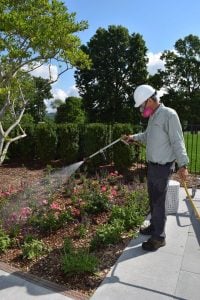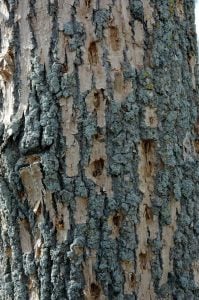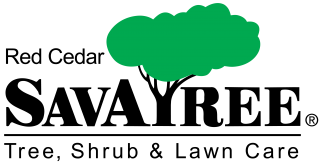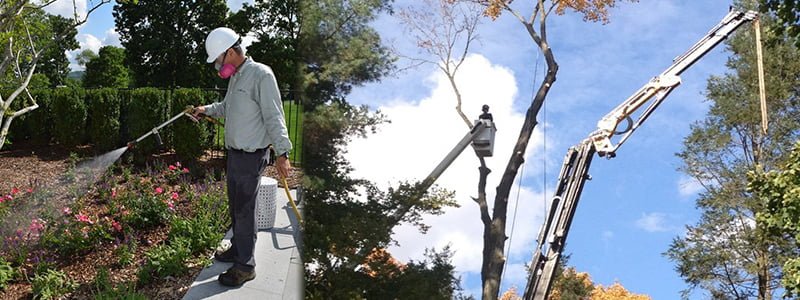When it comes to tree service and shrub care, there are several different practices that can be categorized as either proactive care or reactive care. Proactive plant management and care refers to systemic steps taken to prevent tree issues or illness. Whereas, reactive actions are steps taken to manage existing problems or threats.
Proper preventative tree maintenance and care begins with planting and continues throughout a tree or shrub’s entire life. As with many other maintenance plans, it is so important to be proactive because preventing a problem is much less costly, less time-consuming, and less detrimental than curing one that has already developed.
Since early spring is the ideal time to implement proactive procedures for your tree service and shrub care, let’s discuss some systemic actions you should be taking now to proactively care for the trees and shrubs on your property.
Tree/shrub care:
- Spring Pruning
Pruning is a purposeful action usually taken to accomplish one or more of the following goals; to remove dead/diseased branches, thin the canopy, reduce the longest branches or to remove the lower branches to allow sunlight underneath or to create headroom. Pruning may also be done for aesthetic purposes and size maintenance. Shrubs and hedges are often pruned to keep their shape. Spring pruning is highly dependent on the type of tree. For example, fruit trees (apple, peach, plum, etc.) are most commonly pruned in early spring to encourage a healthy harvest. Whereas, flowering trees, like Flowering Dogwood’s, are usually pruned after flowering. In this case, the time of flowering determines the appropriate time to prune.
- Cabling and Bracing
Tree cabling and bracing is a very effective way to help support a tree in its survival and growth. By bracing and cabling trees that are either structurally unsound or to give trees with weaker limbs more support, we can proactively preserve the life of the tree.
Plant Health Care:
- Fertilizing & Mulching
 The quality of the soil around a tree plays a large role in determining the health of the tree itself. By conducting a soil test, trained tree service professionals can establish whether any key nutrients are missing from a tree’s surrounding soil. If the soil is at all deficient, this is the time where fertilization methods can be performed to help prevent more serious issues associated with the poor soil quality. Additionally, mulch can be placed on top of soil to help maintain moisture and help improve the soil condition. Mulch circles around the base of the tree also help to avoid damages from external factors like mowers, by creating a barrier that avoids traffic around the roots.
The quality of the soil around a tree plays a large role in determining the health of the tree itself. By conducting a soil test, trained tree service professionals can establish whether any key nutrients are missing from a tree’s surrounding soil. If the soil is at all deficient, this is the time where fertilization methods can be performed to help prevent more serious issues associated with the poor soil quality. Additionally, mulch can be placed on top of soil to help maintain moisture and help improve the soil condition. Mulch circles around the base of the tree also help to avoid damages from external factors like mowers, by creating a barrier that avoids traffic around the roots.
- Root Collar Excavation
Root collar excavation refers to the removal of soil or mulch from against the trunk. This is a simple process but can correct deep planting and over mulching.
Other Maintenance & Prevention:
- Insect and Disease Prevention
Pruning can also help in preventing insect issues and diseases by allowing for better air flow. Proactive measures help to prevent insect problems and disease by fostering continued health, growth, and inspections. The type of trees and shrubs planted can also help to deter deer, insects, and other pests that could cause potential problems. For example, the boxwood shrub contains alkaloids within their leaves that is distasteful and poisonous to deer. This makes the boxwood shrub one of the few evergreen shrubs that are left uninterrupted by deer.
- Regular inspections
As part of your proactive plant health care plan, regular inspections and maintenance practices, like those listed above, will help to keep your plant life healthy and prevent issues from occurring. Having professional inspections completed on a regular basis will allow for any weaknesses to be spotted early on, which increases the overall chances of repair and survival.
 At the point where a tree or shrub has already encountered some sort of decline from breakage, pest issues, disease, or infestation, we will change our focus from prevention to management. This is the reactive solution. What we refer to at Red Cedar as IPM (Integrated Pest Management), will include things like tree sprays, fungicide sprays, soil application, trunk injections to control unacceptable threshold levels of insect activity or infestation, and mechanically picking off insects. In addition to pest management, breakage or hazard limbs that are not properly cared for and/or inspected can result in damaging property underneath the tree if the limb or tree falls. Depending on its proximity to your home, we may even need to remove a fallen tree or limb from your home.
At the point where a tree or shrub has already encountered some sort of decline from breakage, pest issues, disease, or infestation, we will change our focus from prevention to management. This is the reactive solution. What we refer to at Red Cedar as IPM (Integrated Pest Management), will include things like tree sprays, fungicide sprays, soil application, trunk injections to control unacceptable threshold levels of insect activity or infestation, and mechanically picking off insects. In addition to pest management, breakage or hazard limbs that are not properly cared for and/or inspected can result in damaging property underneath the tree if the limb or tree falls. Depending on its proximity to your home, we may even need to remove a fallen tree or limb from your home.
As mentioned above, the earlier these signs of trouble are diagnosed, the greater the chance of nursing your tree or shrub back to health. Because of this, regular inspections and proactive plans are not only extremely beneficial, but also the preferred course of action.
Determining the proper course for your tree and shrub care begins with a comprehensive consultation. At Red Cedar, our consultations are free. We can help determine an effective proactive plan and solution that is best for your home’s unique situation. Now is the time to begin implementing your tree and shrub care plan. Contact us today!



Great informative article! I always suggest being proactive when it comes to tree and shrub care!